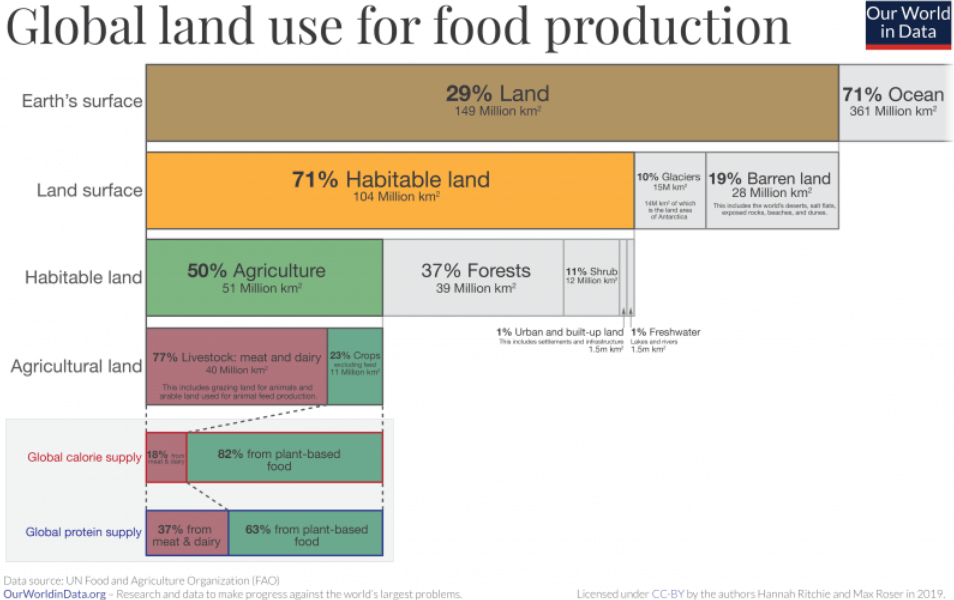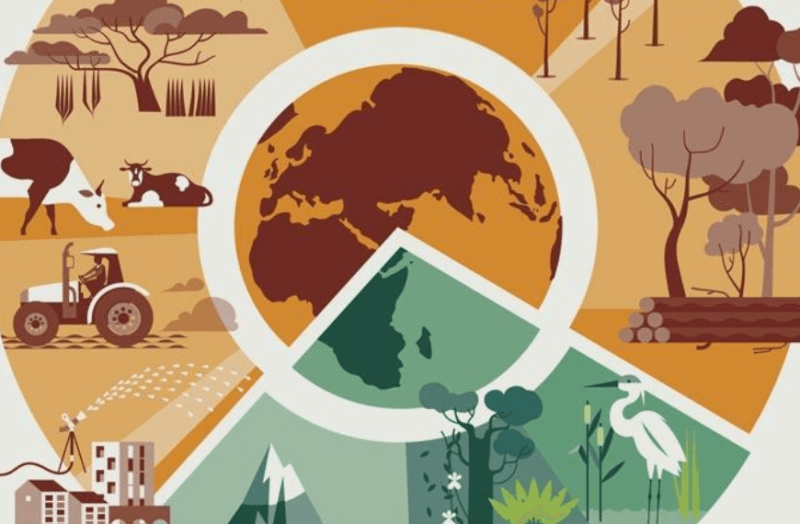Option A: Increase land use
Sounds simple enough, but land is not an infinite resource. Increasing the amount of land used to produce crops is problematic as most countries already have virtually all of their arable land in use to produce food crops. Bringing additional land into crop production often requires cutting down forest land and converting it to crop-producing land. One problem with this option is that forest lands aren’t best suited for crop production and some of these lands are only capable of efficiently producing crops for a few years. Cutting down more forested land isn’t an economical or sustainable way to approach increased production. Not to forget that forests are essential assets to our ecosystems and ecology and further deforestation reduces biodiversity. By cutting down forests we are trading their numerous benefits for minimal food production. The preferential option would be to develop crop varieties capable of profitable production on existing marginal lands.

Option B: Utilize existing marginal lands
We already use marginal land to produce food crops but it is often that the poorer quality of land results in yields so low that the farmer spends more money trying to produce the crop than the harvested amount is worth. This may not always be the case, but marginal lands often result in lower yields in comparison to the healthy, more fertile soil. The reasons for poor soil quality vary greatly. Soils can be sandy, such that it is challenging to build up significant amounts of soil organic carbon that are capable of binding soil nutrients near to the plant’s roots. A challenge with sandy soils is that rain washes soil nutrients into the watershed, unavailable to plants. Alternatively, the soil can be too saline or salty for just about any plant to grow. In other cases, centuries of crop production have depleted the soil nutrients and annual application of proper nutrients is difficult in many parts of the world, resulting in reduced yields.
While marginal land sounds less than ideal to increase our food production, when paired with the right crop science, the crop production could go from marginal to significant yields and quality. Research on developing new crop varieties using genome editing is underway seeking to improve salinity tolerance. Increasing the ability of crops to grow in saline soil would allow these marginal soils to profitably produce crops, as, in many instances, saline areas exist within many fields and produce next to nothing. The adoption of saline tolerant varieties in food insecure countries would allow farmers to increase their yields from their existing land. Genome editing technologies are also capable of developing improved root systems, such that these plants can better utilize existing soil nutrients.
Transitioning marginal lands
One global estimate identifies that there are roughly 2.2 billion hectares of marginal land, which is the equivalent of 22 million square kilometers. Presently, there are about 11 million square kilometers of land used for crop production worldwide. If genome editing technologies were capable of developing new varieties that could economically and sustainably grow on marginal soils, the benefits for improved food security could be enormous. If 50% of the present marginal land was able to produce food crops this could double the current crop production area. Given that marginal land is found all over the planet, this would raise yields in all food insecure countries, contributing to improved food security.
The ability to increase food production resides in the ability to apply innovative technologies to the solution and not rely on ancient, organic methods of food production. Increasing the amount of land used to produce food crops is not a sustainable solution. Scientific advances in how to develop new crops capable of being grown on soils that historically have been unable to do so are a very innovative solution to tackling the persistent problem of food insecurity.
Stuart Smyth is an associate professor at University of Saskatchewan in the College of Agriculture and Bioresources. Stuart is also the Agri-Food Innovation & Sustainability Enhancement Chair at his school and writes about regulations, gene modification and supply chains. You can follow Stuart on Twitter @stuartsmyth66
A version of this article was originally posted at Sustainable Agricultural Innovation & Food. Find SAIFood on Twitter @SAIFood_blog































